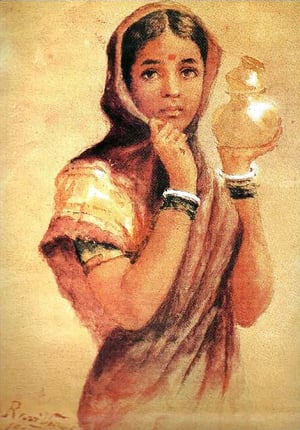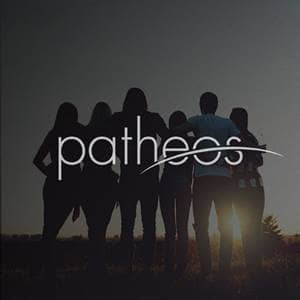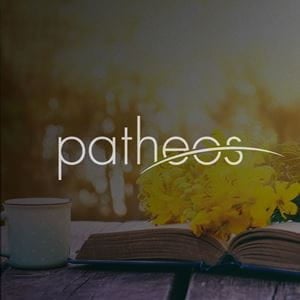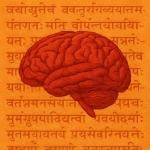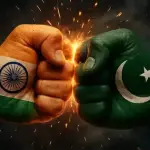Three perspectives on a truncated life!
—
Religious beliefs come in different packages. In most cases, a belief in the nature of “After Life” drives a lot of the mythology, rituals and practices. These specific set of beliefs in the nature of afterlife can drive daily decisions around how to live life, and even how to end it.
Three flavors of afterlife: Belief in afterlife also comes in three flavors. Read the Wikipedia entry for more details, but given below is my simplified argument. So, as I was saying, belief in afterlife comes in three flavors- (1) this life is all there is to “me”, (2) I have only one life, and my fate after life will be decided by my actions in this life, and (3) This life is one in a series, and over many lifetimes I will be able to achieve a state where “I” will be extinguished/salvaged.
Belief in afterlife comes naturally: If you read my previous post, you already know that I recently suffered the loss of my Father. His loss made me realize how “extended narrative” was a very natural conclusion. It is very hard for the mind to accept that someone who was there today, will no longer be around tomorrow.
Filling in the blanks: When we close our eyes to blink or think, our brain naturally assumes the continuity of the world around us. Most optical illusions are based on this quirky feature of brain wiring- that we “fill in”things that we assume to be there. It’s probably the same thought process that makes us continue to think that the departed person, or at least the “essence” of that person, continues onward much after their death. The mind “fills in” the departed person, refusing to recognize that there will be no more real interactions with this person.
What if this is it? There is, after all, no real scientific evidence of a “soul” or the continuity of a personality after physical death. If a person subscribes to the view that there is no afterlife, would their behavior be designed to make the maximum out of this life, or to think of life’s objective as being the “propagation of one’s gene pool”? All non-human living beings, I suppose, belong to this school! Because we can, we humans spend our life thinking about the purpose and meaning of life. To be a lifelong pleasure seeker, or to be concerned only about the propagation of one’s own gene pool, even these are choices that require some thought about the true meaning of life.
One shot, that’s all! What of those who believe that this life is just a short prefix to an infinite afterlife, and that our actions in this life determine our comfort/pleasure in the afterlife? Then, I suppose, people would make some stark decisions about how they want to lead this life. They could lead their life fulfilling a set of action and “Requirements” laid out before them so that they may be judged well. They could, on the other hand, think that this life is but a means to an end, and all actions are justified (however irrational or inhuman they may seem), as long as they are convinced that they are promised an exciting after-life in return. Both choices- a life of piety, or a brutish, short life of inhuman action — both these choices can be made by adjusting “the beliefs” to manipulate the behavior of the individual.
Many life-times: Modern video games come with multiple lives. You could lose one life, and still carry on your mission regardless. Somewhat like this is the Hindu/Buddhist believe that we are trapped in the Samsara- the cycle of birth, death and rebirth. In this belief system, a soul could be reborn into any living form, but the ability to act and do something is only present in the human birth. The objective of the human birth, therefore, is to do enough good work to be reborn a human being and, through geometric proportion acquired over many lives, tote up enough karma points to buy an exit from this endless cycle.
This belief, of a single narrative extended over multiple life-times, is very prevalent in Indian culture. Some of the “let it go” mentality in India comes from this- what’s the rush!? People trace relationship and interactions over several life-times. All good and bad fortune can be explained away through this extended narrative- I must have deserved this fate because of actions in my past lives. This belief in an extended narrative makes people more likely to accept their current situation.
The United States, on the other hand, is a society that acts like it believes very little in the afterlife. Everything has to be consumed now,in this lifetime. Every whim has to be pursued now, in this lifetime. Nothing must be left for later, to another lifetime.
Extending the argument a little, could it be said that most of the wars and conflicts are started in this life, but continue because of the difference of belief in the afterlife?
—
Story 1: This is the life
“You’re obviously doing it wrong”, said CC with contempt, “when the light blinks red, you have to press with your foot HERE! You guys have no sense of timing at all, do you! You deserve to go hungry”. With that he turned around, with the smug look of someone who’s on top of his game, and scurried back to his living quarters .
The first time I saw CC, he was rushing back from the room with the blinking red lights, grinning ear to ear, and with food crumbs still stuck to his unkempt whiskers. He stood out from the others, with his pink skin and athletic built. “Life has been good to me”, he said with pride, “ever since I figured out the secret to finding food. Now I have my own place, stockpiles to last several generations, and my kids are doing great. Is life good, or what?!”
CC had been busy all week chasing that red light. He had good breeding- his parents were hand-selected for the task of having him, as were their parents and their parents, going back 20 generations. CC’s athletic build was a result of this good breeding, as was his pink skin. Life had become more interesting since CC discovered his secret power. He has discovered that he could control the food supply.
Every time that red bulb lit up, he had to press a lever in the next room which, if he did it right, would earn him some more food. This didn’t work all the time- “sometimes I don’t press the lever hard enough, and sometimes the conditions aren’t right”. But what CC knew was that ever since he figured out how to control the food supply, there was no stopping him. “I live a busy life. I have to work hard at keeping my stockpiles up, and making sure I have enough to last for the next 10 generations. My brood is growing fast, you know!”.
With this much success, CC was not given to unnecessary reflection and philosophizing. “I don’t have time for all that navel-gazing. That’s what you guys are for. All I know is that if every lab mouse worked as hard as I did, they would be successful and happy. This is all there is to life. I keep busy, have a massive stockpile and I have a lot of kids that will continue my tradition”.
This is as good as it gets for him. Many living creatures don’t need to believe in afterlife to enjoy their life fully.
—
CC’s full name was CC_Little_27777. He was the latest in a series of highly inbred laboratory specimen mice. He was named after the inventor of the laboratory mice- CC Little. His lab’s research was around perceived control and mice stress.
—
(Links for more research on laboratory mice, their inventor CC Little, the research on “perceived control and stress”, and the WIRED article on Inbred Mouse.). My previous post on belief in afterlife is here.
—
Story 2: Notes from a short life
Lokesh’s diary: Summer 2009
“Today is a hot day in the peak of summer in this great land of ours, where we have lived since time immemorial. The sun will be out early, and the wheat fields will be ripe, golden and wavy.
Brothers, we swarm tonight!
For the glory of our race, we will go out in our thousands…no we shall go out in our hundreds of millions and show them what we were born to do. Our might army will come down like the rain, bringing darkness from the sky to level their fields down to the earth. Our feast will last many days and, when we are done, the devastation that will be left behind will bring nothing but hunger and death to those men who think of us as their enemies. Alone, these men think of us as mere insects that can be crushed under their feet. Together, we can bring them destruction they will remember for generations.
Brothers, our time here is short. We have to be together in this life and the next. Some of us will not survive the day- they will become martyrs. Gone to bring glory to our race, our lost brothers will join us in the after-life, where we will feast forever. In the other life, our fallen brothers will find endless fields of wheat and rice that will feed them for eternity. When it is our time, we will join them too in our endless celebration.
For the glory of our race, we have to be ready to strike first. Those that fall behind in our group, those that refuse to do their share of work for our race- we must slay them. We must slay them and consume them with our anger and our hunger. We must show no mercy. That is our way. We must remove all signs of weakness from our race. That is what we are born to do.
Ours is a short life. Our glorious afterlife will be forever. For the glory of our race, Brothers, let us go out in our hundreds of millions and show them what we were born to do.
“ —
Lokesh is a member of a desert locust swarm. Driven by hunger and fear, the swarms of hundreds of millions of locusts can strip fields and bring disaster to farmers that are unfortunate enough to have their fields on the swarm’s path. Scientists are studying how the fear of cannibalization (of being eaten by another locust from the same swarm) drives the ferocity and intensity of the swarm’s movement.
It could be said that a locust prepares to die when it joins the swarm, but we suppose this life is only a prelude to an everlasting, and glorious, afterlife for this creature.
—
(Links for more research on desert locusts, their eating habits, locust swarm damage, and scientific research oncannibalization and swarming). My previous post on a belief in afterlife is here.
—
Story 3: A long journey, with breaks (and changes)
“How would I know it’s you?”, I remember asking the Monarch desperately, as he was about to disappear into the wind. “I will know you…” were his last words.
The month of February had been unusually cold and rainy in northern California, and the sun barely peeked through the clouds all month. The day the Monarch left with his followers, the winds were blowing at a breezy 10–15 miles an hour, much calmer than the storm in January that had brought in the clouds. He was headed east, towards the Sierra Nevada mountains. He had this calming effect on people, making them smile and reminding them of sunshine, warmth and love. Now, he was gone with no forwarding address.
The Monarch taught us that a journey worth taking, is a journey worth taking over many life-times.
His life was an example of his particular form of mysticism. “This body is a colorful cloth”, he often said, “but your soul is even more luminous. You learn to love your clothes, but you are ready to discard them when they get old. Just like that, learn to love this physical body, but be ready to discard it and take on another one. The endless cycle of living and dying will continue. Your soul has to take a journey over many life-times to reach it’s end state. Don’t stop moving forward”.
We went east to the Sierra Nevada to look for him, but he was gone. Some had heard that he had died there. Distraught and disbelieving, we kept watch for signs of him all over the mountains. Some said he lived by the fragrant milkweed plant, and we should go look there. Others said that he had reincarnated in a small, hapless little hungry creature. Still others remembered his talk of his insatiable thirst for the nectar of life that nourished him. No sightings, and certainly no way that I could find him now.
Months later, we got word from some friends in Oregon, just north of the California border. We rushed over to the grove where the Monarch was rumored to have gathered. As we got there, the air was aflutter with orange banners, floating freely in the sky. This was a familiar gathering. My heart jumped with joy at the thought of meeting the Monarch again. But how will I know him?
Like a floating angel, I could see his new form appear floating in front of me. “You are here, my friend”, he said as he lightly dusted my shoulder. “You look a little different”, I said weakly, “but it’s always good to see you. Is this your final stop”?
“My soul will go on in this endless cycle, until I learn to break this cycle and stop this journey”, he said. “Maybe that’s something you should learn from a butterfly”.
—
The Monarch butterfly is famous for being beautiful in orange, not different from the color donned by Hindu and Buddhist monks. This butterfly has a 4 generation annual migration. The generation that heads out from California goes to Sierra Nevada to have children and then die. The children then proceed on their migration to Oregon, where there give birth and die. The grand-children of the California monarchs spend two generations in Oregon and Washington states, whence they start their return trip to California.
My family was lucky to view the Monarch grove one winter in the Ardenwood farm in Fremont, CA. These memories have a big role in this story.
There are a lot of web resources to study these beautiful souls. My favorite is the PBS:NOVA program, and thesecouple of links. My original post on afterlife is here. Enjoy.



